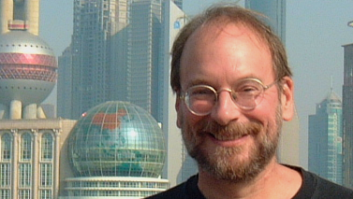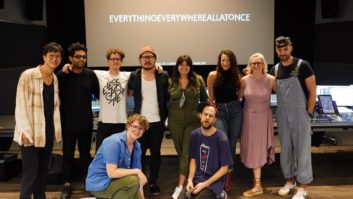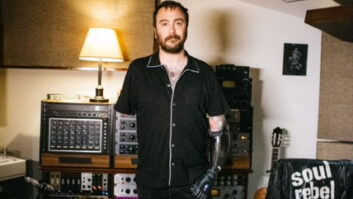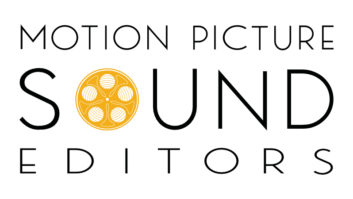Never an industry for the faint-hearted, music recording has been the recipient of multiple whammies lately, such as general record company dysfunction, competition from home studios and an overall trend among the listening public to accept inferior sound as normal. For music-recording facilities, it’s just not business as usual anymore. Only the strong and the smart can survive.
Although the past year has been undeniably difficult, there have not been any major L.A. studio closings. In fact, a couple of brand-new, ground-up facilities debuted in 2002, and two classic studios of the ’70s and ’80s have recently reopened.
In 2000, Alan Kubicka, owner of numerous music and production facilities under the Chicago Recording Company umbrella, took over and reunited the original Kent Duncan/Carl Yanchar/Tom Hidley-designed Kendun Recorders. Renamed Glenwood Place, and with an acoustical update by Yanchar’s Wave:Space Inc. that’s garnered a 2002 TEC Award nomination, the new venture is aimed at the upper-echelon market. After an extensive cosmetic renovation, the rooms were outfitted with an adventurous choice of new consoles: a Euphonix System 5 and a “Rupert Neve” Amek 9098. In mid-2002, veteran studio manager Kit Rebhun, who previously helmed NRG, moved to take over Glenwood’s reins. Shortly after, Mitch Berger, formerly with The Village, came onboard as chief technical engineer.
Studio 3, Kendun’s large live tracking room, sports an SSL 9000 J Series console. And, as of September 1, a 64-input Neve 8068, formerly at New York’s Unique Recording, will replace Studio 2’s 9098. The System 5 remains in Studio 1, a 5.1 surround suite that has hosted projects for The Cartoon Network and music clients.
“Right now, the market wants tried-and-true,” Rebhun says of the 9000 J addition. “People aren’t comfortable with new consoles, even if they’re absolutely incredible. They don’t want to sit down with a learning curve; there just isn’t time for it.”
Plenty of live bands are still recording, and a lot of them are at Hollywood’s Cello Studios, open since 1999. With seven studios housed in the “Western” part of what was Bill Putnam’s legendary United Western Studios, the facility has become a haven for such producers and engineers as Rick Rubin, Jim Scott, Bill Bottrell, Jerry Finn, Joe McGrath, Pat Leonard and George Drakoulias.
Western was the site of such historic recordings as the Beach Boys’ Pet Sounds and Frank Sinatra’s “It Was a Very Good Year,” so there was a lot to live up to. “Our first year was a battle,” admits studio manager Candace Stewart. “People were skeptical, thinking that we’d alter the studios. But it was always our intention to keep the live rooms unchanged.”
Cello’s centerpiece is Studio 1, which can accommodate a 70-piece orchestra and is fitted with a double Neve 8078. Studio 2 houses a heavily modified Neve 8028, and Studio 3, the “Pet Sounds room,” recently replaced its vintage Neve 8078 with an Amek 9098, an experiment that’s proven more successful at Cello than it was at Glenwood Place. “With the 56-in Amek, we get 112 automated faders and the Rupert Neve sound,” Stewart says.
It seems like every available space in Cello’s large complex is being turned into a studio. Private rooms have been revamped, creating an SSL 9000 J mix suite, as well as smaller API and Neve overdub rooms. “I think people come to Cello for a number of reasons,” Stewart says. “One of them is the sound of the rooms; many of our clients are into the concept of ‘the room as instrument.’ They also like our plates and live chambers, and we provide a large support staff. And we’ve got a chief engineer who understands how to maintain vintage equipment and also has an eye to the future.”
“This building — what Bill Putnam created here — is an incredible statement, with a heart and soul of its own,” adds chief engineer and director of technical operations Gary Myerberg. “Our clients tend to be people who understand and appreciate traditional recording. For example, Jim Scott, on John Frusciante’s [of the Red Hot Chili Peppers] record, brought in a Scully 2-track. They’re recording directly to that for some songs, as well as to an old Scully 8-track that I rescued. And, ultimately it will go to Pro Tools|HD.”
Skip Saylor is also a proponent of the multiroom solution; his Skip Saylor Recording made a bold move this year, reopening the three-room Devonshire complex that in the ’70s and ’80s hosted bands from Nirvana and Ozzy Osbourne to Whitney Houston and Roger Waters. Saylor, in business for 22 years with a successful two-room Hollywood facility, caught many by surprise with his decision to expand during the current business climate. Now, in addition to his original Larchmont Village location with its 80-input SSL 9000 J mix room and SSL 4000 G-Plus/Pro Tools|HD multipurpose studio, Saylor Recording includes a large tracking and mix room with an 80-in SSL G-Plus, a Pro Tools suite with attached recording space, and a third record and mix room that houses a 96-input SSL MT.
“The recording business has definitely changed,” Saylor states. “I wouldn’t want to try to make a living from a one-room facility. It’s more efficient when you have multiple rooms and can spread equipment and costs among them — if you can keep them booked, of course.
“The clients coming to me have lots of different needs, and it helps to be flexible. For example, our vintage Neve sidecar, which is often used in the big tracking room, was used in the MT room the other day when they were cutting drums. The fact that I’ve got five distinctive rooms with different equipment is working for me. Pro Tools is great, but a 1073 into Pro Tools is even better. Hip hop projects with real drums, rock projects using real strings — recording is actually fun again.”
It seems like there’s always something new happening at The Enterprise and The Enterprise-2, Craig Huxley’s sprawling Burbank complex. In business since 1984, it now comprises 12 rooms with a number of consoles, including three 101-input SSL 9000 J Series, two Neve Capricorns and two Sony DMX-R100s. The Enterprise has increased its number of Pro Tools suites to four, combining the systems with Focusrite controllers. Busy mixer Dave Pensado keeps the 9k in Studio C, “The Cabin,” occupied by artists such as Christina Aguilera, Destiny’s Child and Pink.
Recently, Huxley has noted an upswing in live recording, with major artists choosing to use E-2’s large 9k-fitted orchestra stage. “We’ve done projects for U2 and for Paul McCartney,” he says, “where they did extensive recording with the band and a string session playing at the same time. Also, Britney Spears shot her live video on Stage J. We built that room three years ago, but it’s only been recently that I see this kind of recording growing in popularity.” Huxley also confides plans to add yet another large SSL room.
In Hollywood, Chalice Recording Studios, the much-talked-about, ground-up facility in the works for the past three-and-a-half years, definitely deserves the phrase “spared no expense.” Stocked with a vast collection of outboard equipment and housing both an 84-input Neve 88R and a 96-input SSL 9000 J Series, Chalice was designed by Gary Starr, studio bau:ton, Studio 440 and George Augspurger under the aupices of owner Ben Tao.
According to Tao, a self-described “cosmopolitan entrepreneur” who has an engineering background and whose family has been in the hotel business, the goal is to provide studio clients with the kind of service that guests expect in a luxury hotel. Chalice’s individually decorated lounges are equipped with Dolby Digital and DTS 5.1 surround sound and a DVD/VHS movie library along with PlayStation 2 and Xbox games. A third editing room houses a Yamaha DM2000 desk, Pro Tools HD3 and super hi-fi Bowers & Wilkins Nautilus 802 speakers with Aragon amps.
Today, few studios share the philosophy of treating their clients as if they were guests at a fine hotel; the idea actually originated with Record Plant back in 1968. The Hollywood facility remains in L.A.’s upper strata, with four SSL rooms and a recent cosmetic renovation
Record Plant president Rose Mann expresses confidence in the future of commercial studios. “Over the past 20 years, we’ve learned to work with, not against, home studios,” she comments. “Many of our clients just don’t want to work at someone’s home, no matter how good that home studio may be. They appreciate not only our equipment but our environment and the level of service that we offer. We have a large staff, with very little turnover, so there’s a familiarity factor that helps make people comfortable. Although, of course, we provide complete privacy if someone wants it, many of our clients appreciate the kind of networking that can happen in a creative community like Record Plant.”
Record Plant is now equipped with four SSL consoles: two 9000 J Series and two G Series. “I’m very happy with the combination of boards that we have now,” Mann continues. “Producers and engineers seem split about 50/50 between 9ks and Gs, so it’s working well to have both.”




